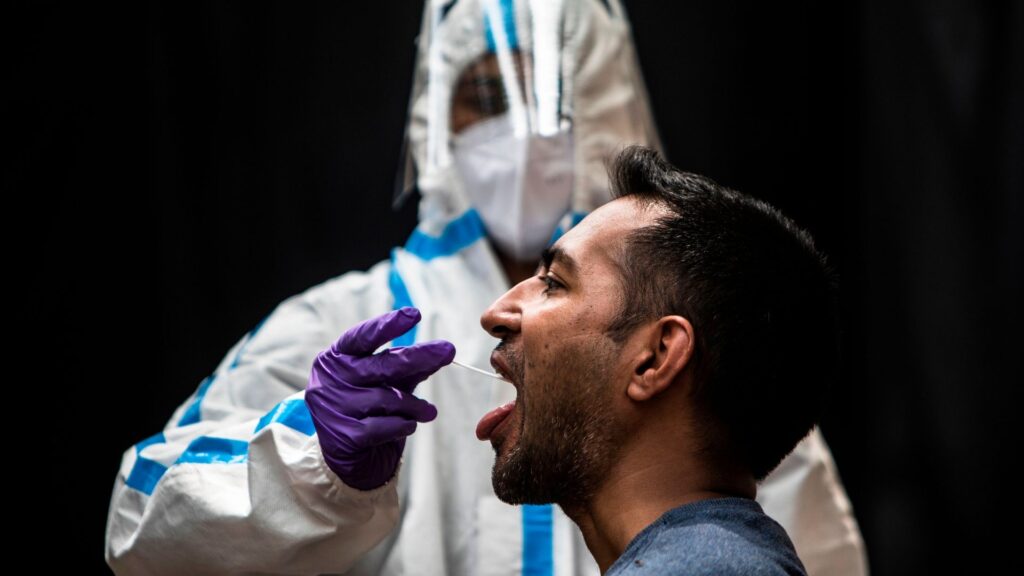From the cases that have been reported, India’s death count has crossed 3 lakh, with almost half, close to 1.4 lakh deaths being reported in the last seven weeks alone.
A false sense of normalcy that crept in towards the end of the first wave when the cases began to decline has been one of the most crucial factors responsible for the exponential rise in cases in the second wave. People started to let their guard down, they started attending large scale religious gatherings, congregating at public spaces, being a part of election rallies, under the impression that the high tide had passed, oblivious to the fact that what was going to hit them would be worse than a tsunami.
As India struggled to address distressed cries for help from millions as they suffered from lack of oxygen, I.C.U beds and proper medical treatment, cases of fungal infections have seen a sharp rise, with the Centre asking the states to declare ‘black fungus’ as an epidemic. So what exactly are the types of these fungal infections, and why is it imperative to take sufficient precautions?
Source: cntraveller.in
Black fungus or Mucormycosis is a rare fungal infection caused by a Mucorales mould, found in damp environments like soil or compost. It does not spread from one person to the other, making it non-contagious. It has been visible in international locations like China, mainly amongst sufferers tormented by immune compromising situations like diabetes, cancer and HIV-AIDS. Covid-19 patients and survivors, especially those having health issues and a weak, compromised immune system are susceptible to the disease.
While it is not a new infection, the rise in the number of infections being reported, its high mortality rate, and the government battling the shortage of Amphotericin B, a crucial antifungal drug, makes the situation more daunting than ever. As per the latest government data on 26th May 2021; more than 11,000 cases of black fungus have been reported so far, with Gujarat, Maharashtra and Andhra Pradesh reporting the highest number of cases.
Pain and redness around the eyes or nose, fever, headache, coughing, shortness of breath and vomit are some of the symptoms. Timely detection and an urgent line of treatment is the best bet against the fungal infection. While the government has started to administer treatment for the same, estimates reveal that in several private and multi-speciality hospitals, the cost of this treatment can go up to 10-15 lakh, which only exacerbates the condition of the patients who aren’t able to afford the treatment.
Even though India accounts for 71 per cent of the total cases of black fungus reported from around the world in March 2021, it is not the only country facing this situation. Pakistan and Russia, too, have reported a surge in black fungus cases among the Covid patients.
Concerns have arisen over the spike in the number of white fungus cases as well. White fungus or candidiasis is one of the most common fungal infections, which is easily treatable. It is not as life-threatening unless symptoms are completely ignored and it becomes invasive. It can become lethal and may impact the brain, the respiratory and the digestive system if not treated in time.
Like the black fungus, it is not contagious and targets people with low immunity. The symptoms of white fungus are quite similar to the Covid-19 symptoms, some of them include chest pain, cough and breathlessness, headaches, pains, infections or even swelling.
Source – cnbctv18.com
Just when we thought that we, as a country couldn’t possibly be in a state worse than this, a yellow fungus infection case was reported in Uttar Pradesh, where a patient recuperating from Covid-19 was suddenly diagnosed with yellow fungus, even though he had previously been sick with both black and white fungal infections.
Yellow fungus is considerably more harmful since it starts inside the body, making it more difficult to diagnose and treat. However, when detected it can be cured with the correct medication. Yellow fungus is a fungal infection that does not generally occur in humans, but in reptiles as per medical experts. Just like the infections discussed above, it targets people with a weak, compromised immune system.
Reading about such distressing developments can be overwhelming, to say the least. Downplaying the seriousness of the situation we’re in will serve no good to anyone. If and when the third wave will hit India is uncertain. However, if there’s anything this pandemic has taught us, it is to always brace ourselves for the unexpected. No, that does not warrant one to be the bearer of mass hysteria; it simply means to not let our guard down.
To minimize the degree of destruction that can be caused by the third wave, it is essential to ramp up our vaccination drive, increase the production and distribution of drugs that are facing a shortage currently, enhance our healthcare facilities, maintain the supplies of oxygen and hospital beds and most importantly, not repeat any of our previous mistakes.
Source – worldometers.info
At a micro level, taking all necessary precautions, identifying symptoms and seeking medical help is of utmost importance. Self-diagnosing and self-medicating in these testing times does more harm than good. We, as a nation, are caught in the middle of an unprecedented escape room, where when you manage to unlock one door after months of resilience and patience, another door pops up right in your face. However, it is imperative to remember that no matter how convoluted the exit plan is, there is always a way out.
Written By Shweta Dilawari
Edited By – Isha Mehrotra
The post India’s Next Wave of Covid-19 and a New Crisis – “The Black, White and Yellow Fungus” appeared first on The Economic Transcript.




